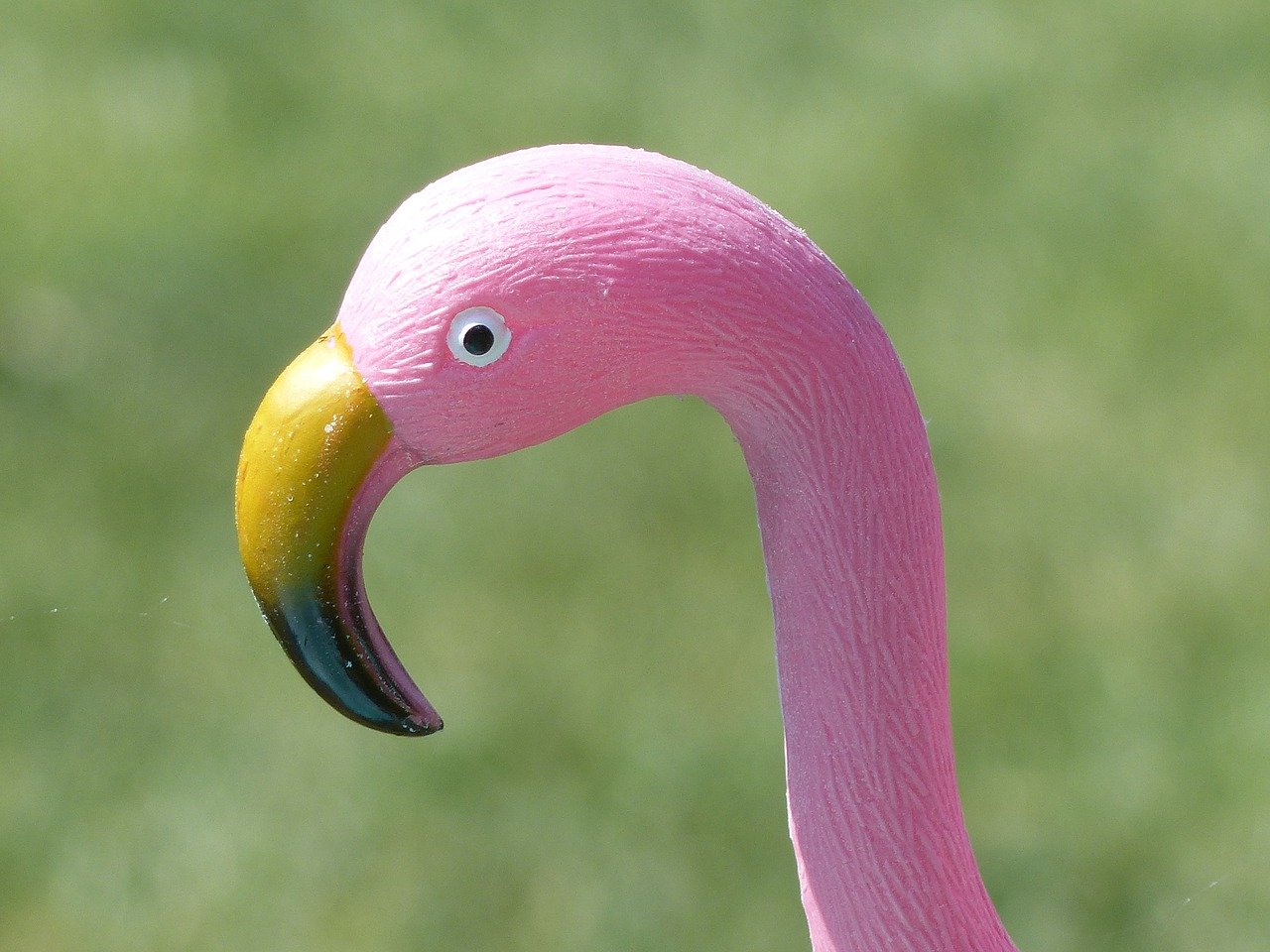The start of a new year would not exist the same way without the human creation of the calendar, but Nature would still let us know it’s the start of a new cycle as the days begin to slowly grow longer heading toward spring.
We also feel these natural rhythms going into our 44th year in business (wow!) at Good Earth Plant Company. We look forward to seeing what’s new in our world, along with clever twists on old ideas, plus brand new concepts. We love recycling.
Based on what we’re seeing and conversations with our colleagues and our customers, we’re looking forward to the following Top Plantscaping and natural design trends to start the decade of the Roaring 20s returned in 2020.
1. Front Door Décor – Year-Round
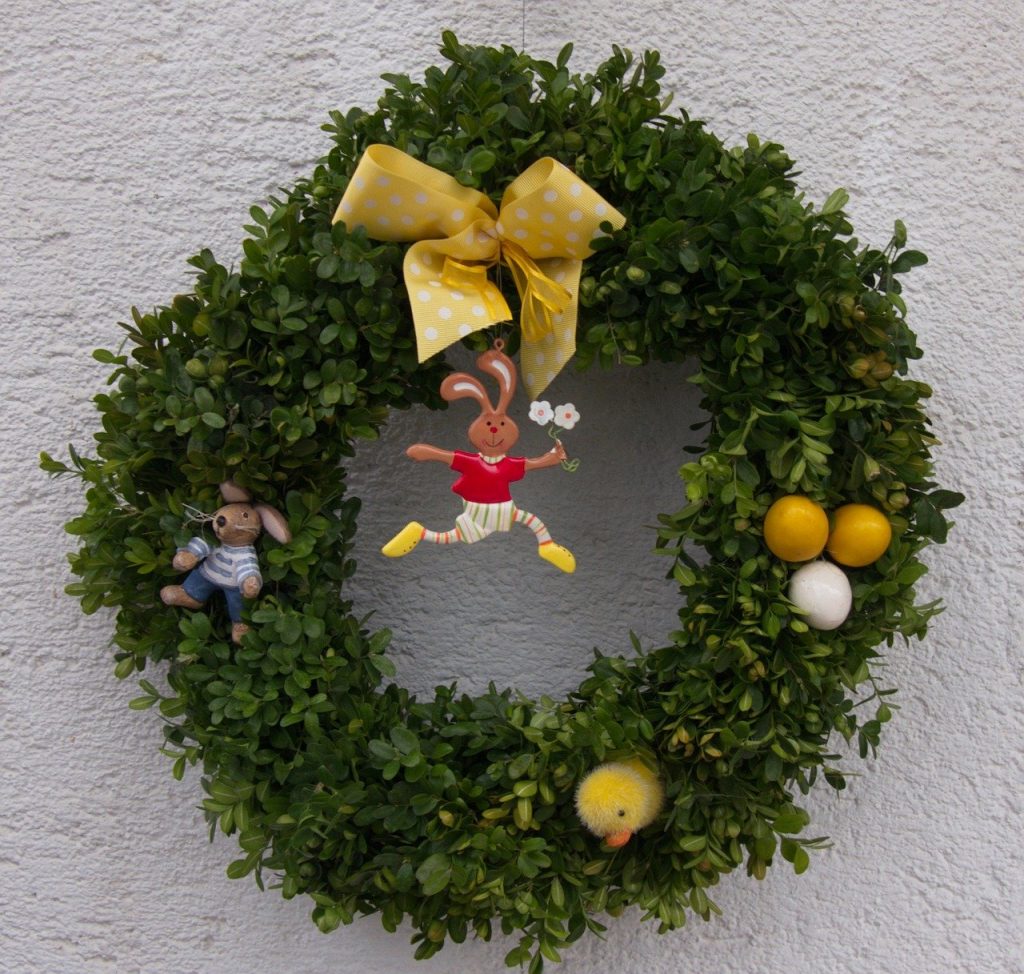
Simple wreaths using greenery can be decorated for any season to brighten your door, not just Christmas. Photo: Hanne Hasu, Pixabay
Have you taken down your Christmas wreath on the front door yet? Or did you switch it out for something with a fresh winter theme, even if you live somewhere sunny year-round like San Diego? People are starting to feature seasonal wreaths on their front door as another easy way to incorporate nature into their everyday lives. What’s more of an everyday activity than walking through your front door? Whether your wreath uses real greenery or incorporates replica elements with natural branches or moss, wreaths are the real thing in 2020. Succulent wreaths are back!
2. Reclaimed Wood in Interior Design
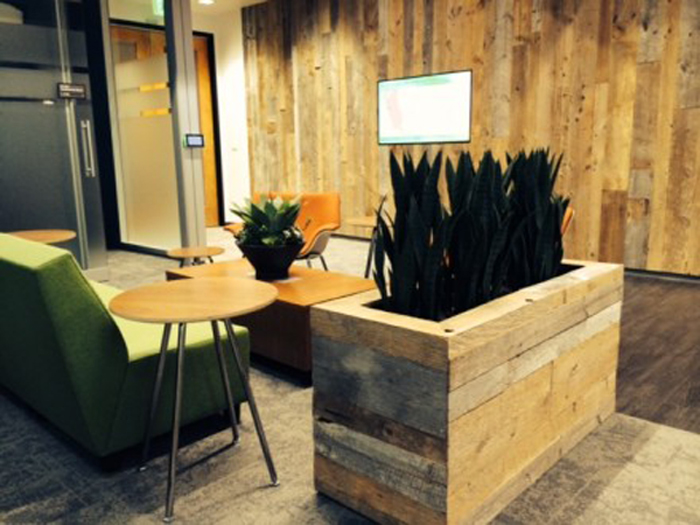
Good Earth Plant Company used reclaimed wood in this office lobby space, including the planter divider. Photo: Stephen Easley
What exactly is reclaimed wood? It is any wood used for floors, cabinets, furniture, or other design fixtures after previously being used for another purpose. In other words, recycled! Designers love reclaimed wood for its unique character. We love it because when it is responsibly and safely harvested, reclaimed wood is a renewable and responsible use of natural resources. Using reclaimed wood means trees aren’t being cut down for brand new wood products and saving landfill waste. Your reclaimed wood floors or cabinets are much better for the environment than petroleum-based floor coverings. We built some planters for SDG&E using reclaimed wood and they look fantastic!. Now one of our suppliers has readymade reclaimed wood planters PIC!
3. More Biophilic Design Elements
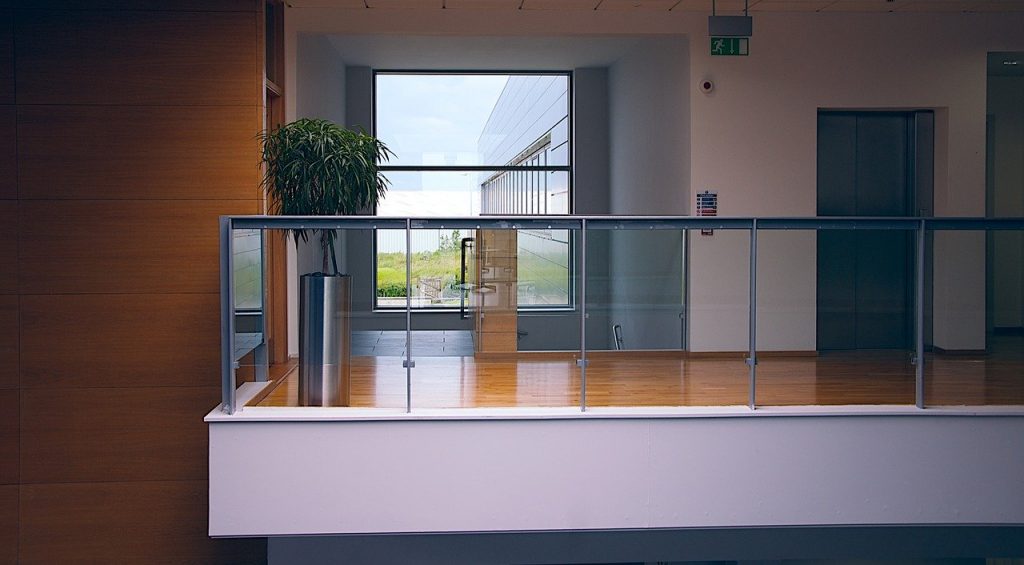
This modern office incorporates several elements of biophilic design: natural light and woods, plus the addition of the plant. Photo: Stuart Green
In addition to using plants, wood, and other natural elements, we see a lot more designs inspired by nature. When it’s not feasible to use wood on the floors, how about computer printed, waterproof porcelain flooring that looks just like wood? Designers are also becoming more deliberate about adding more natural light from windows or skylights, textures on furniture or walls that mimic nature, bamboo, and grasses and using color instead of the all-white and gray trends – we are really over the lack of color.
4. “No Maintenance” Installations: Moss Walls, Replica Plant Walls, and Replica Plants
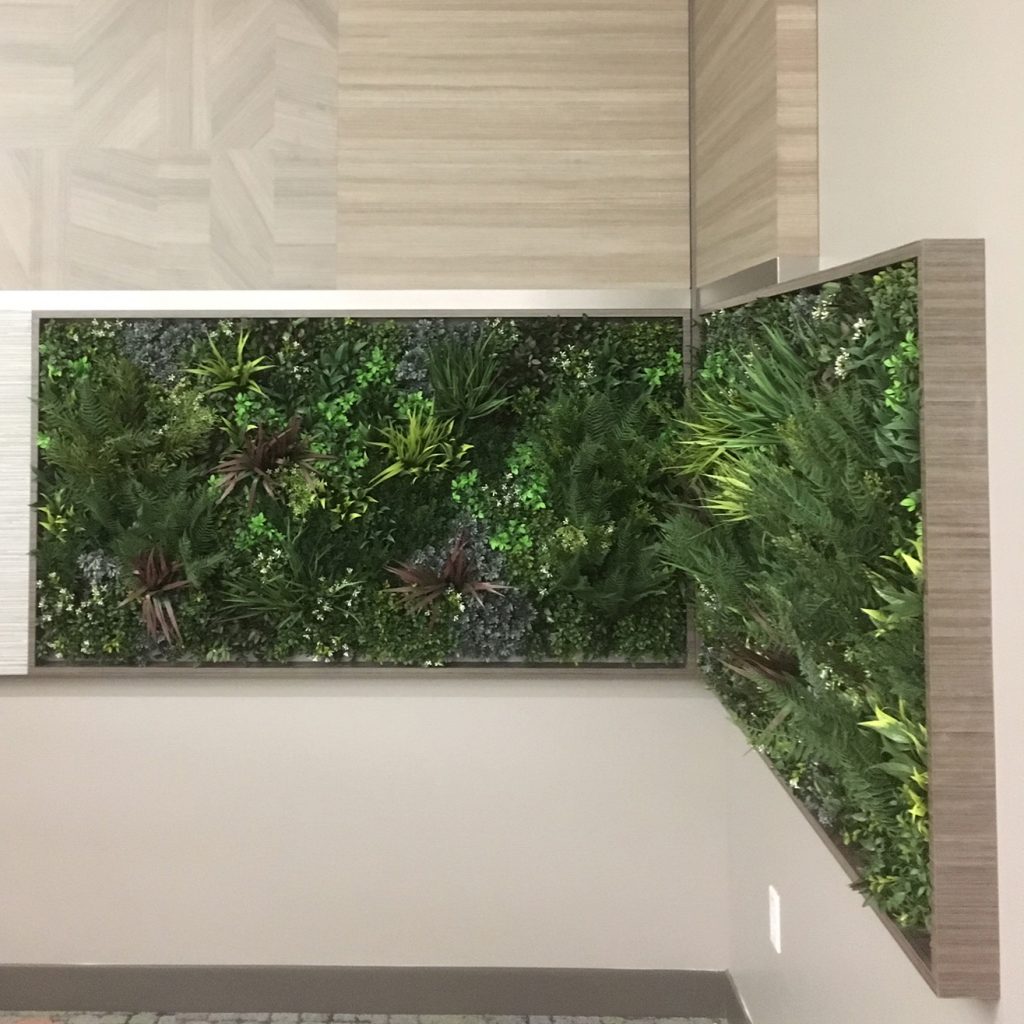
Replica plant walls and other no maintenance projects continue to grow in popularity, like this recent project in Riverside County.
People love our spectacular living walls. Like all growing and living plants, they require ongoing maintenance to look their best. Plants occasionally need to be replaced. A little investment of time and attention is well worth it. We know limited budgeting for ongoing maintenance can mean no project at all. So we offer alternatives that don’t require light, water or maintenance and as a result, we see more clients willing to consider moss walls and replica plant walls. Moss walls only need a little humidity and cleaning, and look super cool. Replica plant walls are really hard to tell from the “real thing.”
5. Replica Plants Still Running Strong
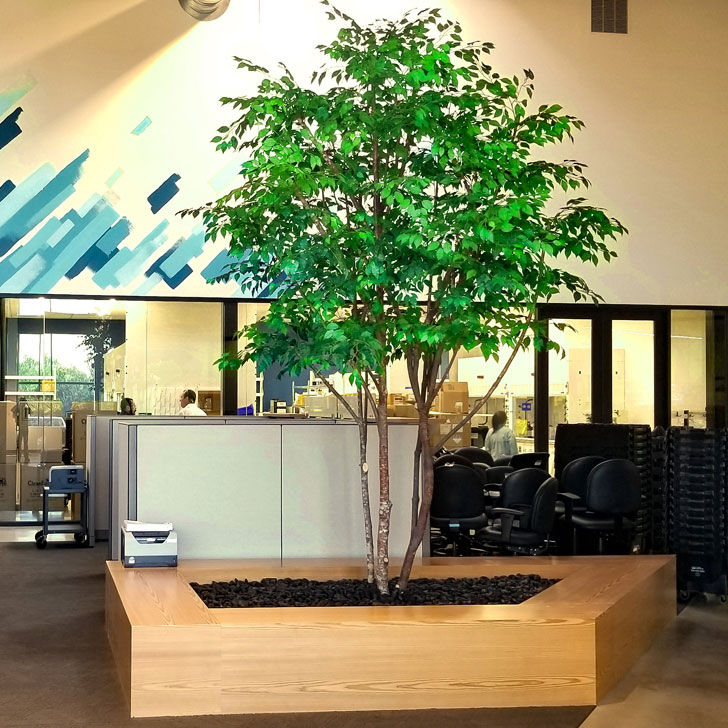
Replica plants can be a wonderful solution when real plants aren’t feasible, like this indoor tree installed by Good Earth Plant Company at NRD.
Our first love is plants and it will always remain plants. Living, growing plants provide the maximum benefits in your home and workplace. But they aren’t always feasible. Sometimes your growing conditions aren’t ideal. Sometimes in an office, there are too many tech elements to safely maintain plants. Replica plants get better looking every single year and more people are willing to consider using them. In order to stay looking real, they need dusting and shaping. Gravity will make them look “droopy”. If we can’t make living plants work, we would at least love to see replica plants sharing space with you.
6. Leaf Prints Sprouting All Over
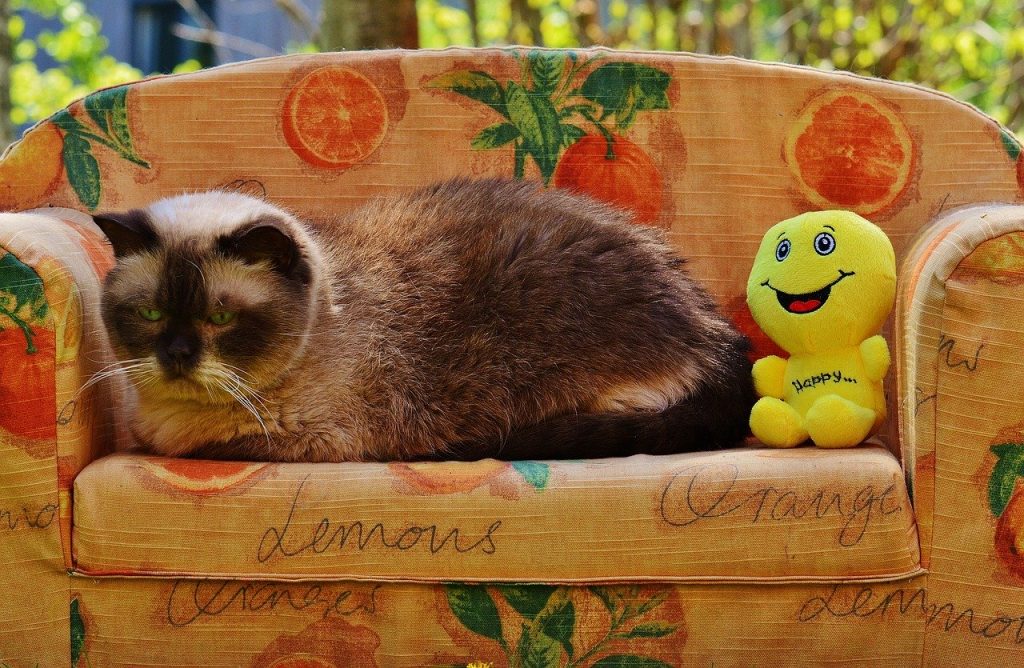
Even cat furniture is getting into biophilic design elements like leaf prints! Photo: Alexas Fotos, Pixabay
Whether they are in textiles, wall coverings, upholstery, or artwork, we see leaf prints coming on strong. Think giant banana leaves and monstera philodendrons. PIC Sometimes they are completely realistic, and other times they are artistic and abstract. We don’t care, we love them both.
7. Pink Flamingos are En Fuego
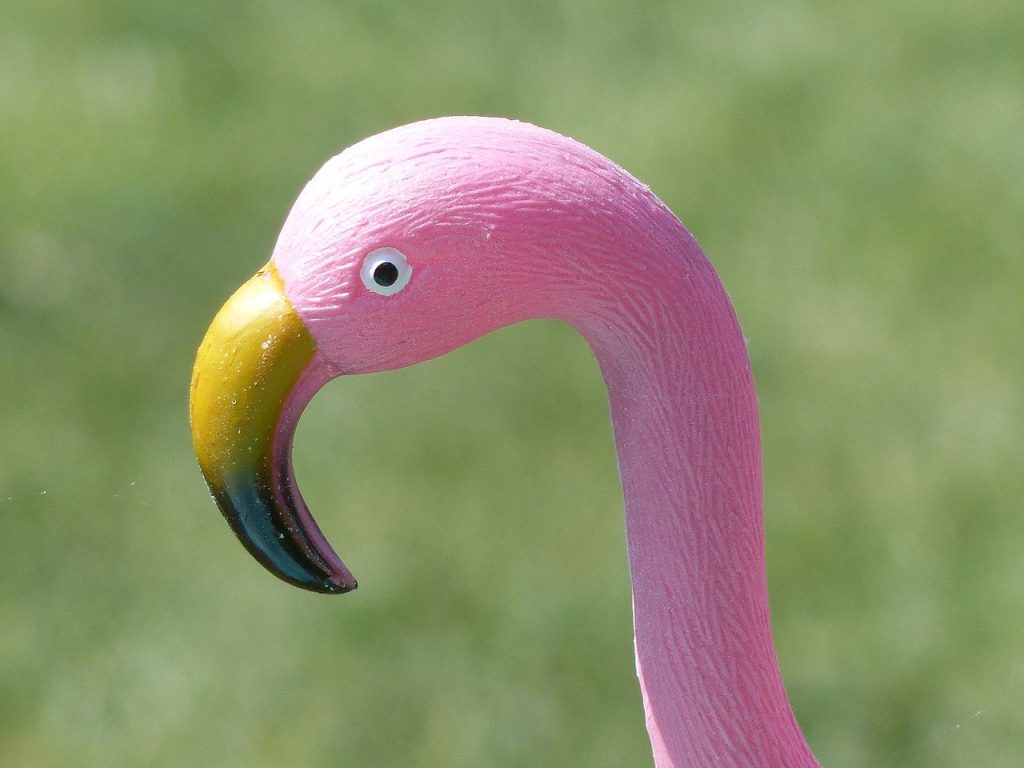
Pink flamingo lawn ornaments were invented in 1957. The first one had a name: Diego! Photo: Lena Svensson, Pixabay
Last year, we noticed the growing popularity of bright colors in containers and other design elements. This year, the bright idea about color comes from natural showoffs such as blazing yellow sunflowers and bright pink flamingos. We don’t encourage you to stuff your yard with a bunch of plastic flamingos, but using them in prints as an unexpected surprise brings the fun into your design scheme.
8. Crazy Cool Containers
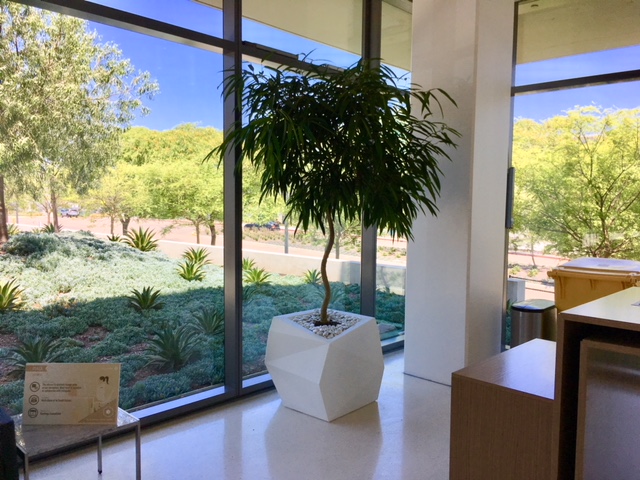
One of our favorite new container styles are these wild origami shapes.
When we first started in business more than 40 years ago at Good Earth Plant Company, a container was just a pot for a plant. OK, we carried some very schlocky looking ceramic owls, bunnies, and turtles. Today, we give a whole lot more thought to containers as a design element. We have more choices in shapes, materials, and colors than ever, and our favorite manufacturers are showing their creativity through unusual shapes and materials. There are patterns and textures made possible through 3D printing and other innovative technologies. There is a good choice for everyone whether it’s an old school ceramic container in earth tones to our favorite origami shaped containers. One of the new looks are “found vessels” they can be anything that holds a plant
9. Taking A Stand With Plant Stands
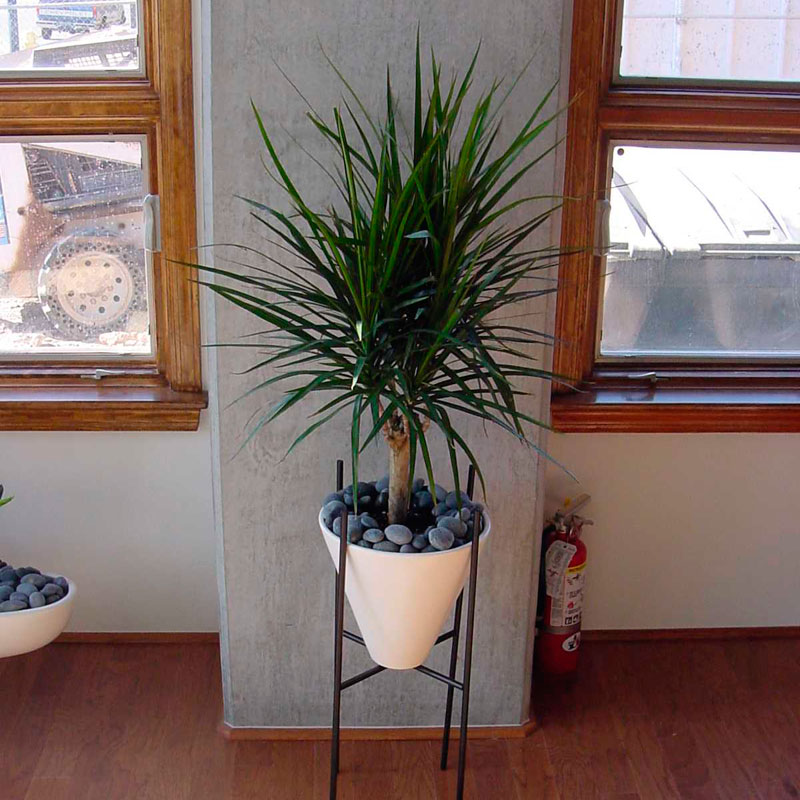
Plant stands come in many forms and turn an ordinary plant into a design element.
What’s better than a stunning plant displayed in your home? A plant elevated to new heights with a plant stand! For people who’ve made use of nearly every empty space in their home to feature plants, or who want to find a new way to make their plants the stars of their interior design, plant stands are becoming a more popular design element. It can also be a practical solution to keeping plants away from pets or babies. There is enough variety to fit into any space or circumstance. Single plant stands, groupings, or sets of shelves as big as your grandma’s old china cabinet are showing up everywhere from IKEA to Target to high-end designers. And there are some fantastic DIY ideas – check your favorite Pinterest page.
10.Regenerative Agriculture and Phytoremediation
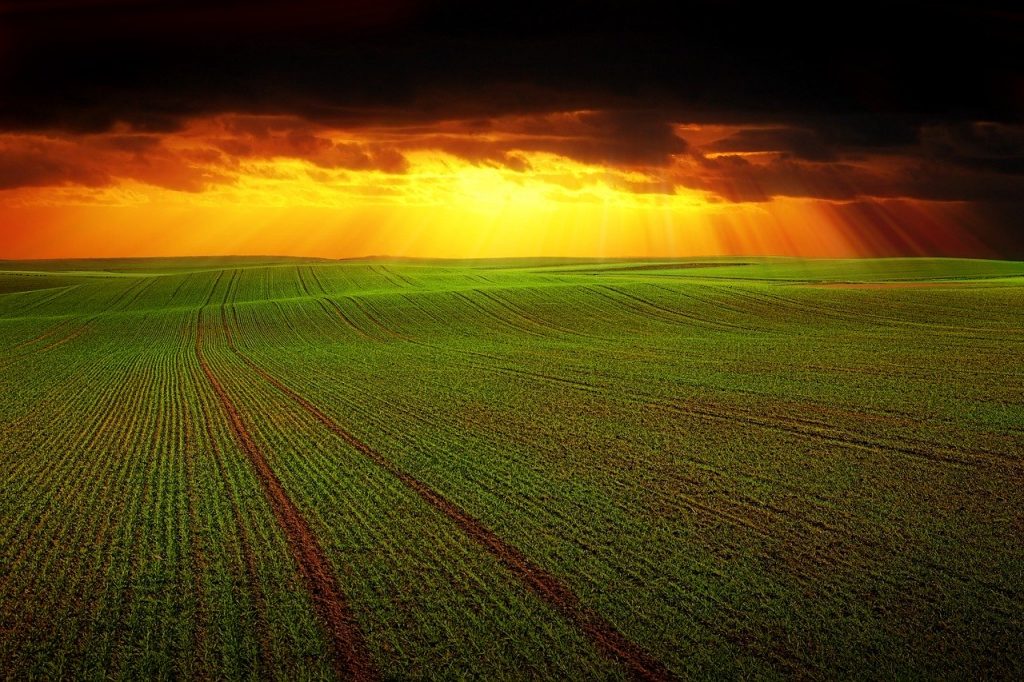
Scientists are starting to explore ways of using plants to clean contaminated soil or rejuvenate depleted agriculture farmland. Photo: Johannes Plenio, Pixabay
Jim the Plant Science Guy here. We know plants in our indoor environments can help clean the air of carbon dioxide and a variety of dangerous chemicals such as benzyne, letting us breathe healthier. Scientists are starting to explore ways of using plants to clean contaminated soil or rejuvenate depleted agriculture farmland. In some cases, it might even be possible to let plants clean contaminated soil instead of digging it out and dumping it. Developing this technology takes time but if it provides a practical solution it’s well worth it. You can read more about regenerative agriculture here.
11.Macramé Slowing Down
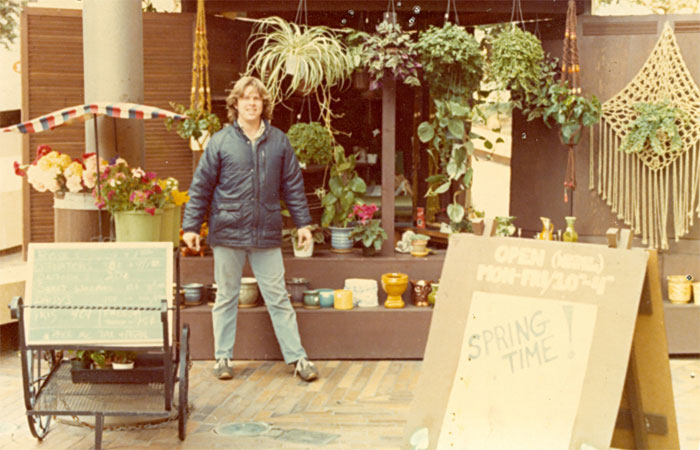
Macrame, yes we’re a little over it since we’ve been into it at Good Earth Plant Company since it was around the first time in the 1970s!
We’ve been through the macramé craze before – back in the 1970s! When we saw it coming back, we couldn’t believe it. But please, we are over it.
One trend hasn’t changed in the past few years: bringing elements of the natural world indoors. Using natural materials, artwork, prints, bright colors, and textures are all ways to integrate nature visually alongside plants and natural light.
Our team of Eco-Warriors at Good Earth Plant Company is fired up to make 2020 your best biophilic year ever! We’ll be attending the Tropical Plant Industry Expo in southern Florida in less than two weeks. We will see even more of the latest trends for 2020 and we promise a full report. Follow my adventures on our social media channels.
If you like what you see – give us a call at 858-576-9300 or email me at jim@goodearthplants.com We enrich people’s lives with plants – how about yours? We can’t wait to hear from you.

